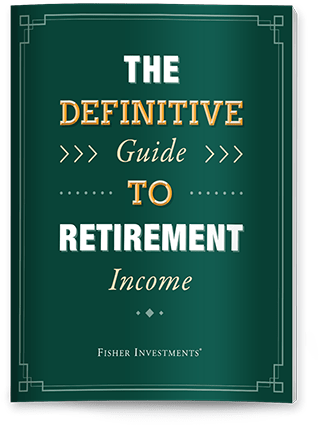Personal Wealth Management / Economics
This Valuation Measure Doesn’t Work, No CAP(E)
A high CAPE is nothing to fear.
Are stocks overpriced? One popular valuation metric—the cyclically adjusted price-to-earnings ratio, or CAPE—suggests so, presently sitting at its third-highest level on record.[i] Per CAPE’s methodology, some think this means stocks are set to deliver below-average returns over the next 10 years. Others say it means something darker … an imminent downturn. In our view, neither take is correct. CAPE is a flawed metric with no predictive power.
As with most conventional valuation metrics, many use CAPE to determine whether stocks are “cheap” or “expensive.” The former supposedly implies the market has room to rise, while the latter suggests stocks may struggle. But per the measure’s co-founder, economics professor Robert Shiller, CAPE wasn’t intended to be a market timing tool. Rather, it aims to project long-term returns—in this case, over the next 10 years.
To do this, the metric compares today’s stock prices with the past 10 years’ inflation-adjusted corporate earnings. The price adjustment aims to remove skew. Same with the long timeframe. Earnings often slow later in an economic expansion, tank during a recession and ramp up when coming out of the downturn. By smoothing out these business-cycle fluctuations, CAPE supposedly provides a more accurate measure of the market’s value.
CAPE’s claim to fame arrived in the late 1990s, when Shiller and his research partner, John Campbell, said their measure was flashing red. At the time, the ratio was at a record level, with 1929 being the only other instance of CAPE being as high (which preceded a weak 10-year return). Similar to 1929, stocks registered a poor 10-year return following 1999, emboldening CAPE’s proponents.[ii] Furthermore, many saw the timing—which came shortly before the dot-com bear market—as evidence CAPE does predict stocks’ next move. But focusing on two high-profile instances overshadows times a high CAPE didn’t portend weak future returns. The mid-1960s and mid-1990s featured high CAPE ratios, but the market rose overall in the subsequent 10 years.[iii]
In our view, CAPE’s biggest shortcoming is using old information to forecast forward-looking stocks. Stocks care about variables affecting future profitability (specifically, over the next 3 – 30 months). Why would factors that influenced earnings last year—let alone a decade ago—matter?
Think of it this way: The 2000s started with the Tech bubble’s popping and ended with the world recovering from the global financial crisis. What about those developments told you anything about the 2010s, which featured the modern era’s longest bull market? According to a strict interpretation of CAPE, the Tech bubble’s deflation mattered to stocks in 2010, while the global financial crisis factored into the market’s return in 2018 and 2019. Similarly, was CAPE in 2011 saying anything about a two-month-long bear market in 2020, when governments shut down the global economy in response to COVID? We don’t think so.
Consider, too, the curious practice of adjusting earnings (CAPE’s denominator) for inflation while leaving stock prices (the numerator) untouched. The upshot is that periods of elevated inflation—as has been the case over the past three years—will skew the ratio higher. Since stock prices reflect higher prices and earnings don’t, the simple math of a higher numerator with a suppressed denominator results in a higher quotient—producing a number that doesn’t reflect reality, in our view.
As a market-timing tool, CAPE fails to identify peaks. Yes, it registered an all-time high in December 1999, just months before the start of the 2000 – 2002 bear market.[iv] But CAPE also had climbed sharply since January 1995 and surpassed 30 (and 1929’s supposedly foreboding level) in 1997.[v] Treating that level as an exit point would have caused investors to miss out on another three years of bull market.[vi] CAPE has also been lofty for most of this millennium. Yet returns haven’t been uniformly below-average—far from it.
Even when CAPE is “right” based on its founders’ methodology, that doesn’t tell you what the next 10 years would look like. A “below-average” decade could feature some great bull market years. The 1999 – 2009 period wasn’t all weak: Stocks did great during the 2002 – 2007 bull market. Sitting that out would have meant missing irreplaceable asset appreciation.
Some people try and calculate an “implied” return from CAPE, but the accuracy is … questionable. Which makes sense because markets aren’t pure math equations. Furthermore, “below average” isn’t a useful moniker on its own. Stocks’ long-term average annualized nominal return is 10.2%.[vii] How far “below” this number are we talking about? Is it below at all, or is that the inflation adjustment at work? Also, what is this relative to other investment options’ returns? Even if you still want to argue CAPE works, unless you can answer those questions, its utility is dubious, in our view.
[i] Source: Multpl.com, as of 8/27/2024.
[ii] Source: Global Financial Data, Inc., as of 2/5/2024. Statement based on S&P 500 Total Return Index, 12/31/1928 – 12/31/1938 and 12/31/1999 – 12/31/2009.
[iii] Ibid. Statement based on S&P 500 Total Return Index, 12/31/1964 – 12/31/1999.
[iv] See note ii. Statement based on S&P 500 Total Return Index, 3/24/2000 – 10/9/2002.
[v] See note i.
[vi] See note ii. Statement based on S&P 500 Total Return Index, 12/31/1997 – 3/24/2000.
[vii] Ibid. Statement based on S&P 500 Total Return Index, 12/31/1925 – 12/31/2023.
If you would like to contact the editors responsible for this article, please message MarketMinder directly.
*The content contained in this article represents only the opinions and viewpoints of the Fisher Investments editorial staff.
Get a weekly roundup of our market insights
Sign up for our weekly e-mail newsletter.

See Our Investment Guides
The world of investing can seem like a giant maze. Fisher Investments has developed several informational and educational guides tackling a variety of investing topics.




